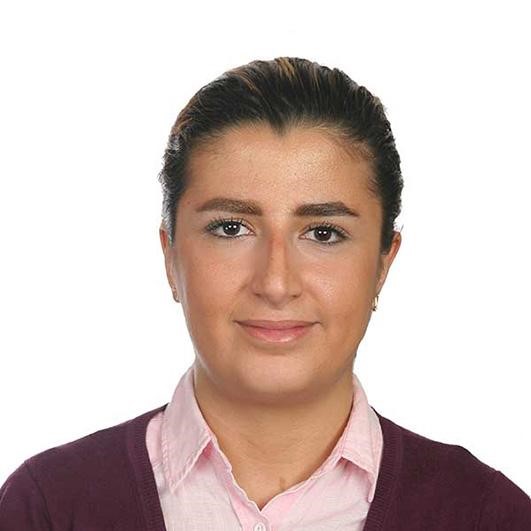AUCTORES
Globalize your Research
Research Article | DOI: https://doi.org/10.31579/2641-8975/024
Professor (Retired) of Statistics, Jahangir Nagar University, Dhaka, Bangladesh.
*Corresponding Author: K.C. Bhuyan, Professor (Retired) of Statistics, Jahangir Nagar University, Dhaka, Bangladesh.
Citation: K.C. Bhuyan (2020) Identification of Socioeconomic Variables Responsible for Obesity Kidney Disease among Bangladeshi Adults J. Diabetes and Islet Biology 3(2); DOI:10.31579/2641-8975/024
Copyright: © 2020 K.C. Bhuyan, This is an open access article distributed under the Creative Commons Attribution License, which permits unrestricted use, distribution, and reproduction in any medium, provided the original work is properly cited.
Received: 20 November 2020 | Accepted: 26 November 2020 | Published: 10 December 2020
Keywords: obesity; kidney disease; socioeconomic variables; association of socioeconomic variable with prevalence of obesity kidney disease; risk ratio; factor analysis
The information presented here were the analytical results observed from data collected in investigating 995 Bangladeshi adults of 18 years and above. The objective of the investigation was to identify socioeconomic variables which enhance the health hazard obesity kidney disease. The analysis indicated that this health problem was noted among 6.2% respondents and it was predominant among males, non-Muslims, elderly people, lower level educated adults, people belonged to families of medium economy, smokers, adults involved in sedentary activities, diabetic and hypertensive respondents. The prevalence rates among these respondents were 0.074, 0.088, 0.188, 0.099, 0.098, 0.088, 0.075, 0.075 and 0.186, respectively. However, all these socioeconomic variables were not similarly responsible for obesity kidney disease among the adults. The most responsible variable was family expenditure followed by family income, physical labour, age, process food consumption, hypertension and duration of diabetes. These variables were identified by factor analysis.
Obesity, like hypertension and diabetes, is the major risk factor in developing kidney disease among human beings, especially among elderly people [1, 2, 3, 4, 5, and 6]. It increases the risk of chronic kidney disease (CKD) and end stage of renal disease (ESRD). It was noted that the elevated body mass index rapidly enhanced the CKD among the pre-existing CKD patients and even among healthy men [2, 4]. The adverse impact of obesity on the kidney creates other complications, like nephrolithiasis and kidney malignancies. This is true for both men and women.
One of the cause of kidney failure is diabetes which is a condition characterized by high blood glucose levels and if this condition exists for long time it damages the millions of tiny filtering units within each kidney resulting kidney failure [7, 8]. It indicates that poor glucose control is a risk factor for kidney function alteration both in type-1 and type-2 diabetes [7]. Thus, it can also be said that the risk of kidney disease is associated with obesity, pre-diabetes and hypertension [8, 9, 10, and 11]. The prevalence of obesity was increasing in many countries, especially in developing countries due to socio-demographic upward mobility despite continuing nutritional deficiencies [12, 13]. In developed countries the problem of obesity has been increasing rapidly [12, 14, 15, and 16]. In 2016, the reported overweight adults of age 18 years and above were 1.9 billon and obese adults were 650 million [17].
The burden of obesity was shifting towards lower socioeconomic group of people most of whom are living in Asia-pacific region. Bangladesh is an Asian country and it has every chance of facing the problem of obesity and its consequences. Thus, it needs to study the proportion of obese people in Bangladesh and the proportion of obese kidney disease patients in the country. The specific objective of the present study is to identify the responsible socioeconomic variables for the prevalence of obesity and kidney disease simultaneously among the adults people of Bangladesh.
The data for this research were collected by some nurses and medical assistants working in diagnostic centres. The centres were purposively selected from both urban and semi-urban areas of Bangladesh. The respondents of this study were 498 males and 497 females of age 18 years and above totalling 995 adults. This composition of male and female was considered to cover the national sex ratio 50.1: 49.9 of population of Bangladesh [18]. The investigated units were the residents of both urban and rural localities. As the adults were investigated from diagnostic centre, most (67%) of them were found diabetic patients. The data were recorded during the session 2018-19.
The information of different socioeconomic variables of each selected respondent were recorded through a pre-designed and pre-tested questionnaire containing different questions related to residence, religion, gender, marital status, age, education, occupation, family income, family expenditure. Beside these demographic data, other information were on life-style, and prevalence of any of the non-communicable diseases, duration of diabetes, and the stages of treatment of the disease including cost of treatment. Some of the socioeconomic variables were qualitative and some were quantitative in nature, but all the variables were noted in nominal scale for ease of analysis. The data of weight (in kg) divided by height (in metre2) was used to measure the value of body mass index (BMI) to identify obese adults (if BMI ≥ 27.5; underweight, if BMI< 18.5; normal, if 18.5 ≤BMI< 23.0; overweight, if 23.0
To fulfil the objective of the study, the association of each of the socioeconomic variable with simultaneous prevalence of obesity kidney disease was investigated, where significant association was decided if p-value of any Chi-square statistic ≤ 0.05 [P (

) ≤0.05]. Irrespective of significant or insignificant association, the risk ratio and its confidence interval was calculated for adults for whom prevalence of obesity kidney problem was noted in higher rate for a particular level of a socioeconomic variable. Finally, factor analysis was done to select the most responsible factor for the prevalence of this health hazard. The most responsible factor was identified depending on the highest absolute value of factor loadings observed in doing factor analysis [23, 24, and 25]. All the calculations were done using SPSS Version 25.
Total respondents were 995, they were classified by level of obesity and prevalence of different health problem. Classified adults were shown in Table 1 below: Among the respondents 30.2% were obese, 12.4% had kidney problem and prevalence of obesity kidney disease was noted in 6.2% respondents. The percentage of obese adults suffering from kidney problem was 20.7. The percentages of adults of different health problems were in significantly increasing trend with the increase in level of body mass index [

=275.875, p –value=0.000].
In the sample there were 53.4% urban residents and 6.6% of them were suffering from obesity kidney disease [Table 2]. Urban and rural adults were almost at similar risk of this health hazard [R.R. =1.13, C.I. (0.69, 1.84]. Residence had no significant impact on obesity kidney problem [

=0.263, p –value=0.615]. Gender variation was also not a significant factor for obesity kidney disease [

=3.446, p-value=0.117]. The percentage of male respondents was 51.1 and 7.4% of them were the patients of obesity kidney problem. They were at 48% more risk of the disease [R.R. =1.48, C.I. (0.90, 2.67)]. Non-Muslim adults were only 14.8%, but higher percentage of them (8.8%) were facing the problem of this health hazard. They were at 60% more risk of the problem [R.R=1.60, C.I. (0.95, 2.42)]. However, obesity kidney disease was independent of religion [

= 2.015, p –value = 0.156]. Married (93.1%) and single adults were at similar risk of this health hazard, though percentage (6.3%) of affected married adults compared to affected single person (5.8%) was slightly more [R.R.=1.08, C.I.(0.51, 2.87)]. Marital status was not an influencing factor for obesity kidney disease [

= 0.194, p –value=0.877]. Among the respondents 8% were of age 60 years and above and 18.8% of them were suffering from obesity kidney disease. Their risk for this health problem was 3.65 times as it was for others [R.R. =3.65, C.I. (1.96, 6.79)]. Again, 19.6% were of age 50 years and above. The percentage of sufferers in these group was 16.9 and their risk for this health problem was 4.67 times as it was for others [R.R. =4.67, C.I. (2.91, 7.50)]. With the increase in age of adults there was a significant increasing trend in the percentage of affected adults [

= 66.281, p –value =0.000].
Though level of education had no statistically significant impact on obesity kidney disease, lower level education and no education together was more risk creating factor for the disease [R.R.=1.64, C.C.(0.96, 2.50);

= 0.056, p – value = 0.056]. There were 17.8% adults having no education and primary education and 9.0% of these two groups were facing the problem of this health hazard. Higher educated people (57.5%) were also more affected (6.6%) by this disease compared to the affected adults observed in the sample. The adults of different professions were almost similarly affected by the disease [

= 0.261, p –value= 0.992]. However, the percentage of affected service persons and retired persons together (42.9%) were slightly more (6.6%) compared to the overall percentage of affected adults. Even these two groups of adults had similar risk of the problem [R.R. =1.10, C.I. (0.68, 1.79)]. The percentage of adults who did not do any physical labour was 51.7 and 6.4% of them were the patients of this health problem. For them the risk of the disease was almost similar as it was for others [R.R. =1.18, C.I. (0.72, 1.93)]. But physical activity was not associated with the prevalence of obesity kidney disease [

= 0.65, p-value=0.799].
Income [

= 1.890, p –value = 0.595] and expenditure [

= 4.06, p – value= 0.203] had no influence on obesity kidney disease and there was no trend in the rates of affected persons with the increase in level on income or expenditure. But, higher percentage (9.8%) of adults of families having income taka 100 – 150 thousand (6.1%) were affected by this health problem. For them the risk of the disease was 64% more as it was for others [R.R. =1.64, C.I. (0.74, 3.66)]. Similar higher risk was observed for adults of families spending taka 60 -80 thousand per month as family expenditure [R.R. =1.74, C.I. (0.99, 2.97)]. The respondents of this group were 14.4% and affected adults of this group were 9.8%. The percentage of smokers was 33.1 and 7.5% of them were patients of obesity kidney disease. Smoking habit was significantly associated with the prevalence of obesity kidney problem and smokers had 89% more risk of this health hazard compared to the risk of non-smokers [

= 5.615, p –value = 0.018; R.R.=1.89, C.I. (1.16, 3.07)].
The percentage of process food consumers was 36.5. The prevalence of obesity kidney disease was noted among 6.9% of them. The risk of prevalence in them was only 18% more as it was in non-consumers of process food [R.R. =1.18, C.I. (0.72, 1.93)]. But habit of process food consumption was not significantly associated with prevalence of obesity kidney disease [

= 0.65, p – value= 0.799]. The percentage of adults involved in sedentary activity was 44.4 and 7.5% of them were the patients of obesity kidney disease. The chance of prevalence in them was 54% more as it was in others [R.R. =1.54, C.I. (0.95, 2.49)]. However, prevalence of the disease was statistically independent of involvement in sedentary activity [

= 2.076, p –value = 0.150].
The sample hypertensive adults were 5.9% and prevalence of obesity kidney disease was observed among 18.6% of them. The risk of prevalence in them was 3.42 times as it was in others R.R. = 3.42, C.I. (1.88, 6.46)]. The rate of prevalence of this health hazard was significantly increasing with the increase in level of blood pressure [

= 50.203, p –value= 0.000]. Among the respondents 67% were diabetic patients. The prevalence of obesity kidney disease was noted in 7.5% of them. The chance of prevalence in them was 2.05 times as it was in others [R.R. = 3.42, C.I. (1.11, 3.790]. Prevalence of diabetes and prevalence this health hazard was significantly associated [

=4.857, p –value= 0.018]. With the increase in duration of diabetes there was significant increase in the rate of prevalence of obesity kidney disease [

=87.715, p –value =0.000]. The rate was highest (18.2%) among diabetic patients (4.4) suffering for 15 years and more. The chance of prevalence in them was 3.20 times as it was in others [R.R. =3.20, C.I. (1.62, 5.81)].
The study of association of prevalence of obesity kidney disease with socioeconomic variable showed that age, smoking habit, sedentary activity, prevalence of diabetes, duration of diabetes and blood pressure level were significantly influencing factors. But none of these variables could be identified as most responsible one for the prevalence. To identify the most responsible variable factor analysis was done utilizing all the studied variables. But final factor analysis was done using the variables which showed at least 0.50 as communality during analysis. The final included variables were age, family income, family expenditure, habit of consumption of process food, physical work, duration of diabetes and blood pressure level. These included variables were satisfactory as KMO = 0.705 which gave

=22.710 with p –value=0.000. The variables explained 72. 353% variation in the data set. The analysis showed that family expenditure was the most responsible variable for the prevalence of obesity kidney disease followed by family income, physical work, and age, consumption of process food, blood pressure level and duration of diabetes. The results of factor analysis were shown in Table 3.
Overweight and obesity are associated with chronic kidney disease [26, 27, and 28]. This phenomenon is observed even among non-diabetic patients [29]. Besides overweight and obesity, other related variables are lifestyle factors such as smoking habit, physical activity, fast food consumption, diet quality, and diabetes, hypertension [7, 30, and 31]. The other socioeconomic variables are also expected to be associated with CKD as these are associated with obesity [32]. The socioeconomic variables may have impacts on simultaneous prevalence of obesity kidney disease. This hypothesis lead to identify some of the responsible socioeconomic variables for prevalence of this health hazard. For this, investigation was conducted on 995 adults of 18 years and above residing in both urban and rural areas of Bangladesh.
From the analysis of the data it was observed that obesity kidney disease was prevailed among 6.2% adults. Some of the socioeconomic variables were significantly associated with prevalence of the disease. These are age, smoking habit, prevalence of diabetes, duration of diabetes and blood pressure. The prevalence rate was 16.9% among elderly people of age 50 years and above (19.6%). The risk of the disease was more than 4 times for this group of adults. The prevalence rate was 8.8% among smokers (33.1%). The chance of prevalence was 89% more compared to that of non-smokers. Among diabetic adults (67%) the prevalence rate was 7.5% and they were two times exposed to this health hazard compared to non-diabetic adults. The percentage of adults suffering from diabetes for 15 years and above was 4.4. For them the risk of prevalence was more than 3 times as it was for others. Percentage of hypertensive adults was 5.9 and prevalence rate was 18.6% in them. Their risk of prevalence was 3.42 times as it was in others.
Religion was independent of prevalence of obesity kidney disease but non-Muslims (14.8%) were 60% more exposed to this health hazard. Family income and family expenditure were not significantly associated with this health problem, but adults (6.1%) belonged to medium income (Taka 100 –150 thousand per month) had 64% more risk of prevalence. The chance of prevalence of the disease was 74% more for adults (14.4%) belonged to families spending 60 – 80 thousand taka. The percentage of adults involved in sedentary activity was 44.4 and they were more exposed to this health problem by 54%. The risk of prevalence of obesity kidney disease was almost similar for adults irrespective of gender, residence, marital stats, physical work, and process food consumption.
Some variables were found significantly associated with prevalence of obesity kidney disease and some were responsible, though not significantly associated with prevalence, for enhancing the risk of prevalence. However, the most responsible variable for the prevalence was family expenditure followed by family income, physical activity, age, process food consumption, blood pressure, and duration of diabetes. This was noted from factor analysis.
The present analysis was an attempt to identify some socioeconomic variables responsible for prevalence of obesity kidney disease among Bangladeshi adults of age 18 years and above. The adults visiting some diagnostic centres located in urban and semi-urban areas in Bangladesh were the investigating units and their number was 995. The data on residence, religion, gender, marital status, age ,education, occupation, family income, family expenditure, physical activity, food habit, smoking habit, prevalence of diabetes, duration of diabetes, blood pressure level including the different steps of treatment of needed for recovery of the health problem were recorded.
The sample contained 51.1% males, 53.4% urban people, 14.8% non-Muslims, 19.6% elderly people, 18.7% lower educated adults, 33.1% smokers, 51.7% physically inactive adults, 36.5% process food consumers, 67.0% diabetic patients, 5.9% hypertensive adults and 44.4% adults who were involved in sedentary activity. The prevalence of obesity kidney disease was noted among 6.2% adults. This rate was more than 6.2% among all the above classified adults. However, the chance of prevalence was 48% more among males, 60% more among non-Muslims, 367% more among elderly people, 64% more among lower educated people, 89% more among smokers, 54% more among adults involved in sedentary activity, 105% more among diabetic patients, and 242% more among hypertensive adults. The chance was 220% more among adults suffering from diabetes for 15 years and above. These results were noted in calculating risk ratio. However, the identified most responsible factor for the prevalence was medium family expenditure, followed by medium family income, physical inactivity, over age, consumption of process food, hypertension, and longer duration of diabetes. This conclusion was drawn on the basis of risk ratio and higher absolute value of factor loading.
The prevalence of overweight and obesity are in increasing trend over the last decades in both developed and developing countries [6, 32, 33, 34, 35, and 36]. Prevalence has implications in increasing the rate of non-communicable diseases including kidney diseases [1, 2, 3, 6, and 32]. Hence, strategies to decrease CKD need the inclusion of prevention technique of overweight and obesity [37]. But due to upward social mobility among the people of Bangladesh, the influences of obesity cannot be avoided but the intensity of the problem can be reduced to a great extent if proper action plan is formulated by the health planners to implement their plan in both urban and rural localities [38]. The social workers, medical practitioners, and other health workers can do a lot to encourage the people in leading healthy life. For this, people can be advised to avoid
(i) Process food, fatty and salty food, can food,
(ii) Sedentary activity,
(ii) Gain of unwanted body weight.
People can also be advised to do some sort of physical work and physical exercise if and when these are possible.
Clearly Auctoresonline and particularly Psychology and Mental Health Care Journal is dedicated to improving health care services for individuals and populations. The editorial boards' ability to efficiently recognize and share the global importance of health literacy with a variety of stakeholders. Auctoresonline publishing platform can be used to facilitate of optimal client-based services and should be added to health care professionals' repertoire of evidence-based health care resources.

Journal of Clinical Cardiology and Cardiovascular Intervention The submission and review process was adequate. However I think that the publication total value should have been enlightened in early fases. Thank you for all.

Journal of Women Health Care and Issues By the present mail, I want to say thank to you and tour colleagues for facilitating my published article. Specially thank you for the peer review process, support from the editorial office. I appreciate positively the quality of your journal.
Journal of Clinical Research and Reports I would be very delighted to submit my testimonial regarding the reviewer board and the editorial office. The reviewer board were accurate and helpful regarding any modifications for my manuscript. And the editorial office were very helpful and supportive in contacting and monitoring with any update and offering help. It was my pleasure to contribute with your promising Journal and I am looking forward for more collaboration.

We would like to thank the Journal of Thoracic Disease and Cardiothoracic Surgery because of the services they provided us for our articles. The peer-review process was done in a very excellent time manner, and the opinions of the reviewers helped us to improve our manuscript further. The editorial office had an outstanding correspondence with us and guided us in many ways. During a hard time of the pandemic that is affecting every one of us tremendously, the editorial office helped us make everything easier for publishing scientific work. Hope for a more scientific relationship with your Journal.

The peer-review process which consisted high quality queries on the paper. I did answer six reviewers’ questions and comments before the paper was accepted. The support from the editorial office is excellent.

Journal of Neuroscience and Neurological Surgery. I had the experience of publishing a research article recently. The whole process was simple from submission to publication. The reviewers made specific and valuable recommendations and corrections that improved the quality of my publication. I strongly recommend this Journal.

Dr. Katarzyna Byczkowska My testimonial covering: "The peer review process is quick and effective. The support from the editorial office is very professional and friendly. Quality of the Clinical Cardiology and Cardiovascular Interventions is scientific and publishes ground-breaking research on cardiology that is useful for other professionals in the field.

Thank you most sincerely, with regard to the support you have given in relation to the reviewing process and the processing of my article entitled "Large Cell Neuroendocrine Carcinoma of The Prostate Gland: A Review and Update" for publication in your esteemed Journal, Journal of Cancer Research and Cellular Therapeutics". The editorial team has been very supportive.

Testimony of Journal of Clinical Otorhinolaryngology: work with your Reviews has been a educational and constructive experience. The editorial office were very helpful and supportive. It was a pleasure to contribute to your Journal.

Dr. Bernard Terkimbi Utoo, I am happy to publish my scientific work in Journal of Women Health Care and Issues (JWHCI). The manuscript submission was seamless and peer review process was top notch. I was amazed that 4 reviewers worked on the manuscript which made it a highly technical, standard and excellent quality paper. I appreciate the format and consideration for the APC as well as the speed of publication. It is my pleasure to continue with this scientific relationship with the esteem JWHCI.

This is an acknowledgment for peer reviewers, editorial board of Journal of Clinical Research and Reports. They show a lot of consideration for us as publishers for our research article “Evaluation of the different factors associated with side effects of COVID-19 vaccination on medical students, Mutah university, Al-Karak, Jordan”, in a very professional and easy way. This journal is one of outstanding medical journal.
Dear Hao Jiang, to Journal of Nutrition and Food Processing We greatly appreciate the efficient, professional and rapid processing of our paper by your team. If there is anything else we should do, please do not hesitate to let us know. On behalf of my co-authors, we would like to express our great appreciation to editor and reviewers.

As an author who has recently published in the journal "Brain and Neurological Disorders". I am delighted to provide a testimonial on the peer review process, editorial office support, and the overall quality of the journal. The peer review process at Brain and Neurological Disorders is rigorous and meticulous, ensuring that only high-quality, evidence-based research is published. The reviewers are experts in their fields, and their comments and suggestions were constructive and helped improve the quality of my manuscript. The review process was timely and efficient, with clear communication from the editorial office at each stage. The support from the editorial office was exceptional throughout the entire process. The editorial staff was responsive, professional, and always willing to help. They provided valuable guidance on formatting, structure, and ethical considerations, making the submission process seamless. Moreover, they kept me informed about the status of my manuscript and provided timely updates, which made the process less stressful. The journal Brain and Neurological Disorders is of the highest quality, with a strong focus on publishing cutting-edge research in the field of neurology. The articles published in this journal are well-researched, rigorously peer-reviewed, and written by experts in the field. The journal maintains high standards, ensuring that readers are provided with the most up-to-date and reliable information on brain and neurological disorders. In conclusion, I had a wonderful experience publishing in Brain and Neurological Disorders. The peer review process was thorough, the editorial office provided exceptional support, and the journal's quality is second to none. I would highly recommend this journal to any researcher working in the field of neurology and brain disorders.

Dear Agrippa Hilda, Journal of Neuroscience and Neurological Surgery, Editorial Coordinator, I trust this message finds you well. I want to extend my appreciation for considering my article for publication in your esteemed journal. I am pleased to provide a testimonial regarding the peer review process and the support received from your editorial office. The peer review process for my paper was carried out in a highly professional and thorough manner. The feedback and comments provided by the authors were constructive and very useful in improving the quality of the manuscript. This rigorous assessment process undoubtedly contributes to the high standards maintained by your journal.

International Journal of Clinical Case Reports and Reviews. I strongly recommend to consider submitting your work to this high-quality journal. The support and availability of the Editorial staff is outstanding and the review process was both efficient and rigorous.

Thank you very much for publishing my Research Article titled “Comparing Treatment Outcome Of Allergic Rhinitis Patients After Using Fluticasone Nasal Spray And Nasal Douching" in the Journal of Clinical Otorhinolaryngology. As Medical Professionals we are immensely benefited from study of various informative Articles and Papers published in this high quality Journal. I look forward to enriching my knowledge by regular study of the Journal and contribute my future work in the field of ENT through the Journal for use by the medical fraternity. The support from the Editorial office was excellent and very prompt. I also welcome the comments received from the readers of my Research Article.

Dear Erica Kelsey, Editorial Coordinator of Cancer Research and Cellular Therapeutics Our team is very satisfied with the processing of our paper by your journal. That was fast, efficient, rigorous, but without unnecessary complications. We appreciated the very short time between the submission of the paper and its publication on line on your site.

I am very glad to say that the peer review process is very successful and fast and support from the Editorial Office. Therefore, I would like to continue our scientific relationship for a long time. And I especially thank you for your kindly attention towards my article. Have a good day!

"We recently published an article entitled “Influence of beta-Cyclodextrins upon the Degradation of Carbofuran Derivatives under Alkaline Conditions" in the Journal of “Pesticides and Biofertilizers” to show that the cyclodextrins protect the carbamates increasing their half-life time in the presence of basic conditions This will be very helpful to understand carbofuran behaviour in the analytical, agro-environmental and food areas. We greatly appreciated the interaction with the editor and the editorial team; we were particularly well accompanied during the course of the revision process, since all various steps towards publication were short and without delay".

I would like to express my gratitude towards you process of article review and submission. I found this to be very fair and expedient. Your follow up has been excellent. I have many publications in national and international journal and your process has been one of the best so far. Keep up the great work.

We are grateful for this opportunity to provide a glowing recommendation to the Journal of Psychiatry and Psychotherapy. We found that the editorial team were very supportive, helpful, kept us abreast of timelines and over all very professional in nature. The peer review process was rigorous, efficient and constructive that really enhanced our article submission. The experience with this journal remains one of our best ever and we look forward to providing future submissions in the near future.

I am very pleased to serve as EBM of the journal, I hope many years of my experience in stem cells can help the journal from one way or another. As we know, stem cells hold great potential for regenerative medicine, which are mostly used to promote the repair response of diseased, dysfunctional or injured tissue using stem cells or their derivatives. I think Stem Cell Research and Therapeutics International is a great platform to publish and share the understanding towards the biology and translational or clinical application of stem cells.

I would like to give my testimony in the support I have got by the peer review process and to support the editorial office where they were of asset to support young author like me to be encouraged to publish their work in your respected journal and globalize and share knowledge across the globe. I really give my great gratitude to your journal and the peer review including the editorial office.

I am delighted to publish our manuscript entitled "A Perspective on Cocaine Induced Stroke - Its Mechanisms and Management" in the Journal of Neuroscience and Neurological Surgery. The peer review process, support from the editorial office, and quality of the journal are excellent. The manuscripts published are of high quality and of excellent scientific value. I recommend this journal very much to colleagues.

Dr.Tania Muñoz, My experience as researcher and author of a review article in The Journal Clinical Cardiology and Interventions has been very enriching and stimulating. The editorial team is excellent, performs its work with absolute responsibility and delivery. They are proactive, dynamic and receptive to all proposals. Supporting at all times the vast universe of authors who choose them as an option for publication. The team of review specialists, members of the editorial board, are brilliant professionals, with remarkable performance in medical research and scientific methodology. Together they form a frontline team that consolidates the JCCI as a magnificent option for the publication and review of high-level medical articles and broad collective interest. I am honored to be able to share my review article and open to receive all your comments.

“The peer review process of JPMHC is quick and effective. Authors are benefited by good and professional reviewers with huge experience in the field of psychology and mental health. The support from the editorial office is very professional. People to contact to are friendly and happy to help and assist any query authors might have. Quality of the Journal is scientific and publishes ground-breaking research on mental health that is useful for other professionals in the field”.

Dear editorial department: On behalf of our team, I hereby certify the reliability and superiority of the International Journal of Clinical Case Reports and Reviews in the peer review process, editorial support, and journal quality. Firstly, the peer review process of the International Journal of Clinical Case Reports and Reviews is rigorous, fair, transparent, fast, and of high quality. The editorial department invites experts from relevant fields as anonymous reviewers to review all submitted manuscripts. These experts have rich academic backgrounds and experience, and can accurately evaluate the academic quality, originality, and suitability of manuscripts. The editorial department is committed to ensuring the rigor of the peer review process, while also making every effort to ensure a fast review cycle to meet the needs of authors and the academic community. Secondly, the editorial team of the International Journal of Clinical Case Reports and Reviews is composed of a group of senior scholars and professionals with rich experience and professional knowledge in related fields. The editorial department is committed to assisting authors in improving their manuscripts, ensuring their academic accuracy, clarity, and completeness. Editors actively collaborate with authors, providing useful suggestions and feedback to promote the improvement and development of the manuscript. We believe that the support of the editorial department is one of the key factors in ensuring the quality of the journal. Finally, the International Journal of Clinical Case Reports and Reviews is renowned for its high- quality articles and strict academic standards. The editorial department is committed to publishing innovative and academically valuable research results to promote the development and progress of related fields. The International Journal of Clinical Case Reports and Reviews is reasonably priced and ensures excellent service and quality ratio, allowing authors to obtain high-level academic publishing opportunities in an affordable manner. I hereby solemnly declare that the International Journal of Clinical Case Reports and Reviews has a high level of credibility and superiority in terms of peer review process, editorial support, reasonable fees, and journal quality. Sincerely, Rui Tao.

Clinical Cardiology and Cardiovascular Interventions I testity the covering of the peer review process, support from the editorial office, and quality of the journal.

Clinical Cardiology and Cardiovascular Interventions, we deeply appreciate the interest shown in our work and its publication. It has been a true pleasure to collaborate with you. The peer review process, as well as the support provided by the editorial office, have been exceptional, and the quality of the journal is very high, which was a determining factor in our decision to publish with you.
The peer reviewers process is quick and effective, the supports from editorial office is excellent, the quality of journal is high. I would like to collabroate with Internatioanl journal of Clinical Case Reports and Reviews journal clinically in the future time.

Clinical Cardiology and Cardiovascular Interventions, I would like to express my sincerest gratitude for the trust placed in our team for the publication in your journal. It has been a true pleasure to collaborate with you on this project. I am pleased to inform you that both the peer review process and the attention from the editorial coordination have been excellent. Your team has worked with dedication and professionalism to ensure that your publication meets the highest standards of quality. We are confident that this collaboration will result in mutual success, and we are eager to see the fruits of this shared effort.

Dear Dr. Jessica Magne, Editorial Coordinator 0f Clinical Cardiology and Cardiovascular Interventions, I hope this message finds you well. I want to express my utmost gratitude for your excellent work and for the dedication and speed in the publication process of my article titled "Navigating Innovation: Qualitative Insights on Using Technology for Health Education in Acute Coronary Syndrome Patients." I am very satisfied with the peer review process, the support from the editorial office, and the quality of the journal. I hope we can maintain our scientific relationship in the long term.
Dear Monica Gissare, - Editorial Coordinator of Nutrition and Food Processing. ¨My testimony with you is truly professional, with a positive response regarding the follow-up of the article and its review, you took into account my qualities and the importance of the topic¨.

Dear Dr. Jessica Magne, Editorial Coordinator 0f Clinical Cardiology and Cardiovascular Interventions, The review process for the article “The Handling of Anti-aggregants and Anticoagulants in the Oncologic Heart Patient Submitted to Surgery” was extremely rigorous and detailed. From the initial submission to the final acceptance, the editorial team at the “Journal of Clinical Cardiology and Cardiovascular Interventions” demonstrated a high level of professionalism and dedication. The reviewers provided constructive and detailed feedback, which was essential for improving the quality of our work. Communication was always clear and efficient, ensuring that all our questions were promptly addressed. The quality of the “Journal of Clinical Cardiology and Cardiovascular Interventions” is undeniable. It is a peer-reviewed, open-access publication dedicated exclusively to disseminating high-quality research in the field of clinical cardiology and cardiovascular interventions. The journal's impact factor is currently under evaluation, and it is indexed in reputable databases, which further reinforces its credibility and relevance in the scientific field. I highly recommend this journal to researchers looking for a reputable platform to publish their studies.

Dear Editorial Coordinator of the Journal of Nutrition and Food Processing! "I would like to thank the Journal of Nutrition and Food Processing for including and publishing my article. The peer review process was very quick, movement and precise. The Editorial Board has done an extremely conscientious job with much help, valuable comments and advices. I find the journal very valuable from a professional point of view, thank you very much for allowing me to be part of it and I would like to participate in the future!”

Dealing with The Journal of Neurology and Neurological Surgery was very smooth and comprehensive. The office staff took time to address my needs and the response from editors and the office was prompt and fair. I certainly hope to publish with this journal again.Their professionalism is apparent and more than satisfactory. Susan Weiner

My Testimonial Covering as fellowing: Lin-Show Chin. The peer reviewers process is quick and effective, the supports from editorial office is excellent, the quality of journal is high. I would like to collabroate with Internatioanl journal of Clinical Case Reports and Reviews.

My experience publishing in Psychology and Mental Health Care was exceptional. The peer review process was rigorous and constructive, with reviewers providing valuable insights that helped enhance the quality of our work. The editorial team was highly supportive and responsive, making the submission process smooth and efficient. The journal's commitment to high standards and academic rigor makes it a respected platform for quality research. I am grateful for the opportunity to publish in such a reputable journal.
My experience publishing in International Journal of Clinical Case Reports and Reviews was exceptional. I Come forth to Provide a Testimonial Covering the Peer Review Process and the editorial office for the Professional and Impartial Evaluation of the Manuscript.

I would like to offer my testimony in the support. I have received through the peer review process and support the editorial office where they are to support young authors like me, encourage them to publish their work in your esteemed journals, and globalize and share knowledge globally. I really appreciate your journal, peer review, and editorial office.
Dear Agrippa Hilda- Editorial Coordinator of Journal of Neuroscience and Neurological Surgery, "The peer review process was very quick and of high quality, which can also be seen in the articles in the journal. The collaboration with the editorial office was very good."

I would like to express my sincere gratitude for the support and efficiency provided by the editorial office throughout the publication process of my article, “Delayed Vulvar Metastases from Rectal Carcinoma: A Case Report.” I greatly appreciate the assistance and guidance I received from your team, which made the entire process smooth and efficient. The peer review process was thorough and constructive, contributing to the overall quality of the final article. I am very grateful for the high level of professionalism and commitment shown by the editorial staff, and I look forward to maintaining a long-term collaboration with the International Journal of Clinical Case Reports and Reviews.
To Dear Erin Aust, I would like to express my heartfelt appreciation for the opportunity to have my work published in this esteemed journal. The entire publication process was smooth and well-organized, and I am extremely satisfied with the final result. The Editorial Team demonstrated the utmost professionalism, providing prompt and insightful feedback throughout the review process. Their clear communication and constructive suggestions were invaluable in enhancing my manuscript, and their meticulous attention to detail and dedication to quality are truly commendable. Additionally, the support from the Editorial Office was exceptional. From the initial submission to the final publication, I was guided through every step of the process with great care and professionalism. The team's responsiveness and assistance made the entire experience both easy and stress-free. I am also deeply impressed by the quality and reputation of the journal. It is an honor to have my research featured in such a respected publication, and I am confident that it will make a meaningful contribution to the field.

"I am grateful for the opportunity of contributing to [International Journal of Clinical Case Reports and Reviews] and for the rigorous review process that enhances the quality of research published in your esteemed journal. I sincerely appreciate the time and effort of your team who have dedicatedly helped me in improvising changes and modifying my manuscript. The insightful comments and constructive feedback provided have been invaluable in refining and strengthening my work".

I thank the ‘Journal of Clinical Research and Reports’ for accepting this article for publication. This is a rigorously peer reviewed journal which is on all major global scientific data bases. I note the review process was prompt, thorough and professionally critical. It gave us an insight into a number of important scientific/statistical issues. The review prompted us to review the relevant literature again and look at the limitations of the study. The peer reviewers were open, clear in the instructions and the editorial team was very prompt in their communication. This journal certainly publishes quality research articles. I would recommend the journal for any future publications.

Dear Jessica Magne, with gratitude for the joint work. Fast process of receiving and processing the submitted scientific materials in “Clinical Cardiology and Cardiovascular Interventions”. High level of competence of the editors with clear and correct recommendations and ideas for enriching the article.

We found the peer review process quick and positive in its input. The support from the editorial officer has been very agile, always with the intention of improving the article and taking into account our subsequent corrections.

My article, titled 'No Way Out of the Smartphone Epidemic Without Considering the Insights of Brain Research,' has been republished in the International Journal of Clinical Case Reports and Reviews. The review process was seamless and professional, with the editors being both friendly and supportive. I am deeply grateful for their efforts.
To Dear Erin Aust – Editorial Coordinator of Journal of General Medicine and Clinical Practice! I declare that I am absolutely satisfied with your work carried out with great competence in following the manuscript during the various stages from its receipt, during the revision process to the final acceptance for publication. Thank Prof. Elvira Farina

Dear Jessica, and the super professional team of the ‘Clinical Cardiology and Cardiovascular Interventions’ I am sincerely grateful to the coordinated work of the journal team for the no problem with the submission of my manuscript: “Cardiometabolic Disorders in A Pregnant Woman with Severe Preeclampsia on the Background of Morbid Obesity (Case Report).” The review process by 5 experts was fast, and the comments were professional, which made it more specific and academic, and the process of publication and presentation of the article was excellent. I recommend that my colleagues publish articles in this journal, and I am interested in further scientific cooperation. Sincerely and best wishes, Dr. Oleg Golyanovskiy.

Dear Ashley Rosa, Editorial Coordinator of the journal - Psychology and Mental Health Care. " The process of obtaining publication of my article in the Psychology and Mental Health Journal was positive in all areas. The peer review process resulted in a number of valuable comments, the editorial process was collaborative and timely, and the quality of this journal has been quickly noticed, resulting in alternative journals contacting me to publish with them." Warm regards, Susan Anne Smith, PhD. Australian Breastfeeding Association.

Dear Jessica Magne, Editorial Coordinator, Clinical Cardiology and Cardiovascular Interventions, Auctores Publishing LLC. I appreciate the journal (JCCI) editorial office support, the entire team leads were always ready to help, not only on technical front but also on thorough process. Also, I should thank dear reviewers’ attention to detail and creative approach to teach me and bring new insights by their comments. Surely, more discussions and introduction of other hemodynamic devices would provide better prevention and management of shock states. Your efforts and dedication in presenting educational materials in this journal are commendable. Best wishes from, Farahnaz Fallahian.
Dear Maria Emerson, Editorial Coordinator, International Journal of Clinical Case Reports and Reviews, Auctores Publishing LLC. I am delighted to have published our manuscript, "Acute Colonic Pseudo-Obstruction (ACPO): A rare but serious complication following caesarean section." I want to thank the editorial team, especially Maria Emerson, for their prompt review of the manuscript, quick responses to queries, and overall support. Yours sincerely Dr. Victor Olagundoye.

Dear Ashley Rosa, Editorial Coordinator, International Journal of Clinical Case Reports and Reviews. Many thanks for publishing this manuscript after I lost confidence the editors were most helpful, more than other journals Best wishes from, Susan Anne Smith, PhD. Australian Breastfeeding Association.

Dear Agrippa Hilda, Editorial Coordinator, Journal of Neuroscience and Neurological Surgery. The entire process including article submission, review, revision, and publication was extremely easy. The journal editor was prompt and helpful, and the reviewers contributed to the quality of the paper. Thank you so much! Eric Nussbaum, MD
Dr Hala Al Shaikh This is to acknowledge that the peer review process for the article ’ A Novel Gnrh1 Gene Mutation in Four Omani Male Siblings, Presentation and Management ’ sent to the International Journal of Clinical Case Reports and Reviews was quick and smooth. The editorial office was prompt with easy communication.

Dear Erin Aust, Editorial Coordinator, Journal of General Medicine and Clinical Practice. We are pleased to share our experience with the “Journal of General Medicine and Clinical Practice”, following the successful publication of our article. The peer review process was thorough and constructive, helping to improve the clarity and quality of the manuscript. We are especially thankful to Ms. Erin Aust, the Editorial Coordinator, for her prompt communication and continuous support throughout the process. Her professionalism ensured a smooth and efficient publication experience. The journal upholds high editorial standards, and we highly recommend it to fellow researchers seeking a credible platform for their work. Best wishes By, Dr. Rakhi Mishra.

Dear Jessica Magne, Editorial Coordinator, Clinical Cardiology and Cardiovascular Interventions, Auctores Publishing LLC. The peer review process of the journal of Clinical Cardiology and Cardiovascular Interventions was excellent and fast, as was the support of the editorial office and the quality of the journal. Kind regards Walter F. Riesen Prof. Dr. Dr. h.c. Walter F. Riesen.

Dear Ashley Rosa, Editorial Coordinator, International Journal of Clinical Case Reports and Reviews, Auctores Publishing LLC. Thank you for publishing our article, Exploring Clozapine's Efficacy in Managing Aggression: A Multiple Single-Case Study in Forensic Psychiatry in the international journal of clinical case reports and reviews. We found the peer review process very professional and efficient. The comments were constructive, and the whole process was efficient. On behalf of the co-authors, I would like to thank you for publishing this article. With regards, Dr. Jelle R. Lettinga.

Dear Clarissa Eric, Editorial Coordinator, Journal of Clinical Case Reports and Studies, I would like to express my deep admiration for the exceptional professionalism demonstrated by your journal. I am thoroughly impressed by the speed of the editorial process, the substantive and insightful reviews, and the meticulous preparation of the manuscript for publication. Additionally, I greatly appreciate the courteous and immediate responses from your editorial office to all my inquiries. Best Regards, Dariusz Ziora

Dear Chrystine Mejia, Editorial Coordinator, Journal of Neurodegeneration and Neurorehabilitation, Auctores Publishing LLC, We would like to thank the editorial team for the smooth and high-quality communication leading up to the publication of our article in the Journal of Neurodegeneration and Neurorehabilitation. The reviewers have extensive knowledge in the field, and their relevant questions helped to add value to our publication. Kind regards, Dr. Ravi Shrivastava.

Dear Clarissa Eric, Editorial Coordinator, Journal of Clinical Case Reports and Studies, Auctores Publishing LLC, USA Office: +1-(302)-520-2644. I would like to express my sincere appreciation for the efficient and professional handling of my case report by the ‘Journal of Clinical Case Reports and Studies’. The peer review process was not only fast but also highly constructive—the reviewers’ comments were clear, relevant, and greatly helped me improve the quality and clarity of my manuscript. I also received excellent support from the editorial office throughout the process. Communication was smooth and timely, and I felt well guided at every stage, from submission to publication. The overall quality and rigor of the journal are truly commendable. I am pleased to have published my work with Journal of Clinical Case Reports and Studies, and I look forward to future opportunities for collaboration. Sincerely, Aline Tollet, UCLouvain.

Dear Ms. Mayra Duenas, Editorial Coordinator, International Journal of Clinical Case Reports and Reviews. “The International Journal of Clinical Case Reports and Reviews represented the “ideal house” to share with the research community a first experience with the use of the Simeox device for speech rehabilitation. High scientific reputation and attractive website communication were first determinants for the selection of this Journal, and the following submission process exceeded expectations: fast but highly professional peer review, great support by the editorial office, elegant graphic layout. Exactly what a dynamic research team - also composed by allied professionals - needs!" From, Chiara Beccaluva, PT - Italy.

Dear Maria Emerson, Editorial Coordinator, we have deeply appreciated the professionalism demonstrated by the International Journal of Clinical Case Reports and Reviews. The reviewers have extensive knowledge of our field and have been very efficient and fast in supporting the process. I am really looking forward to further collaboration. Thanks. Best regards, Dr. Claudio Ligresti